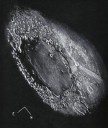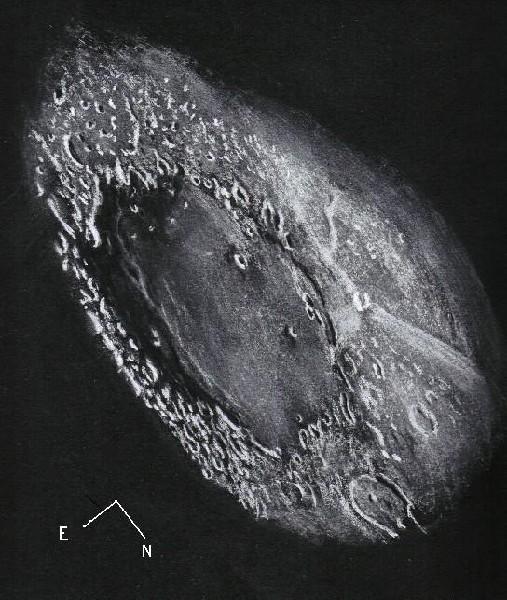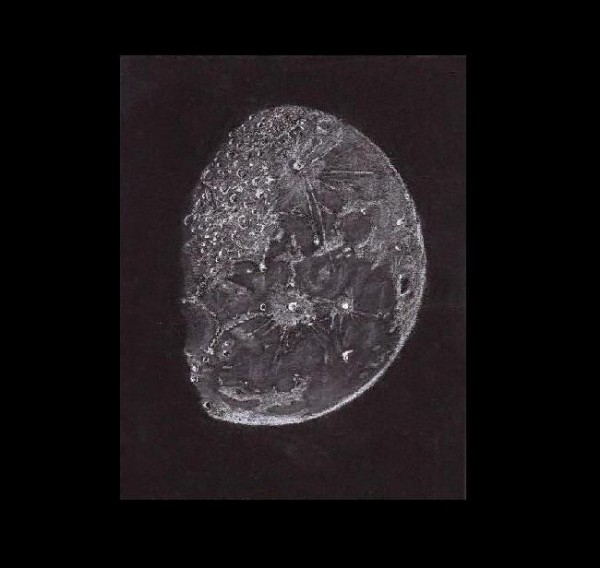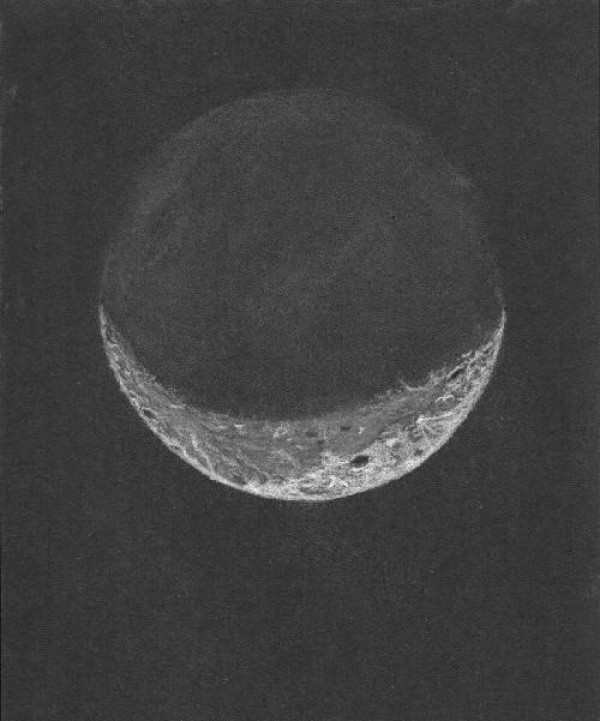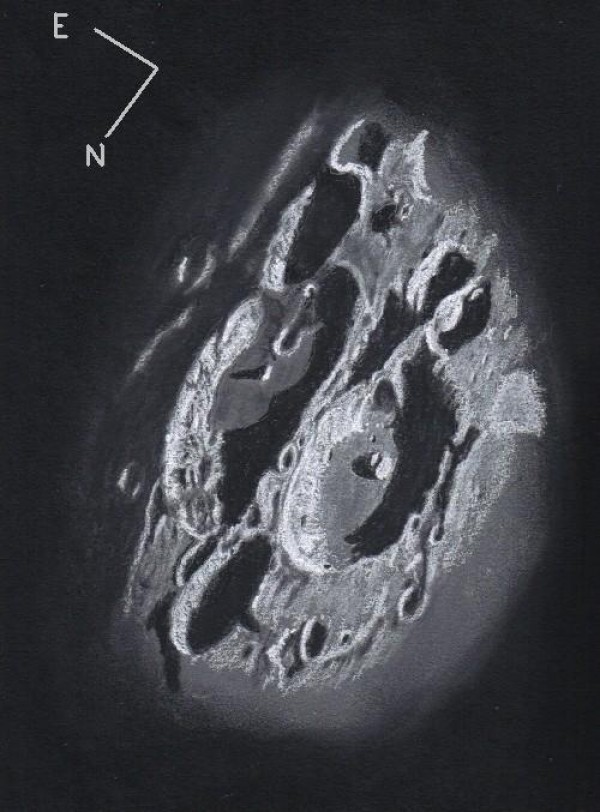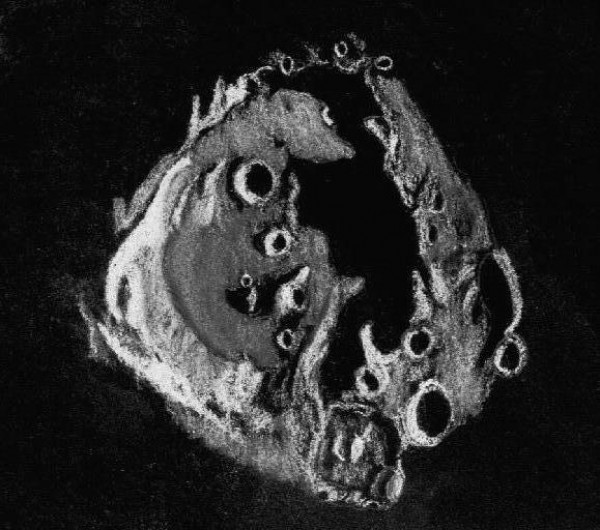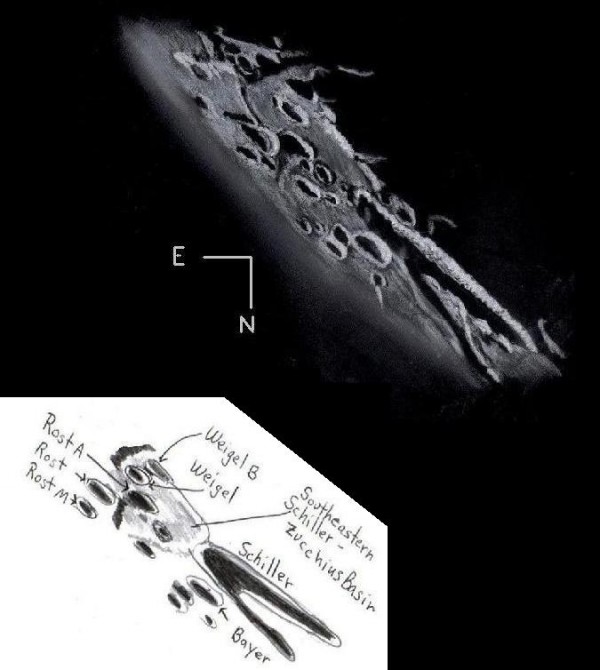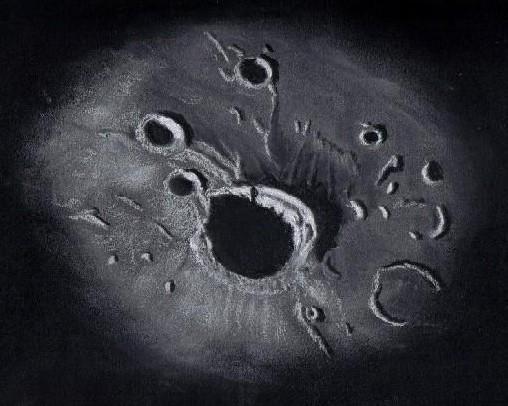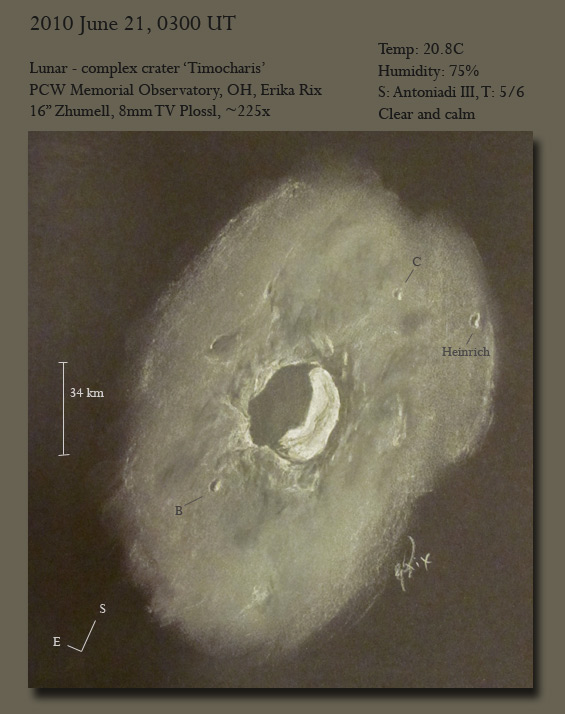Galaxy NGC 1023 in Perseus
This is a bright galaxy in the constellation of Perseus that can be seen in a 4.25 inch scope under good sky conditions. NGC 1023 is morphologically classified as a SBO lenticular barred galaxy. It looks much like an armless spiral galaxy in large telescope images. At 33 million light years away it is surprisingly bright at 9.5-10.2 visual magnitude and has a bright nuclear core. The bar was not detectable. A faint companion NGC 1023A is superimposed on its eastern side but also not detectable visually in a 10″ scope. This is a pretty good target from light polluted skies if you are looking for galaxies with a modest instrument on a moonless night.
Sketching:
NGC 1023
Date and Time: 11-2-2010, 10:30pm – 11:15pm local time
Scope: 10” f/5.7 Dobsonian. 12 mm eyepiece 121x
8″x 12″ black sketching paper, white Conte’ pastel pencil,
blending stump, printer scanned
Seeing: Pickering 6/10
Transparency: Average 4/5
Faintest stars visible overhead 4.2
Temperature: 3°C (38°F) calm
Galaxy magnitude: 9.5- 10.2
Distance: 33 million light years
Location Constellation: Pegasus
R.A. 2h 40m 24s; Dec +39° 04′
Frank McCabe


